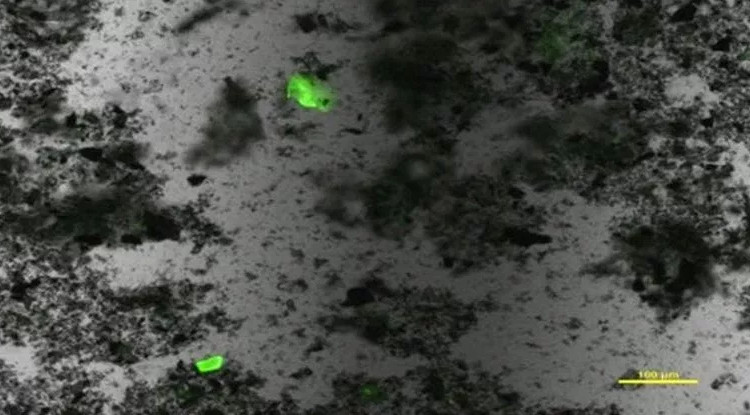99% of invisible plastic spraying in oceans will be found by ... dyes
The smallest pieces of trash in the ocean can be removed by a new type. This may be the potential solution for this growing environmental crisis.
The oceans are full of plastic. We all know that and this is really a big problem today. But we don't know exactly how big this pile is. Large pieces of garbage accumulating in the water cycles often make us shocked by its terrible size.
But small pieces of unseen trash cause more serious problems. Particles smaller than 5mm - often called 'micro plastics' - are small pieces found in cosmetics and cleaning products, clothing fibers, or made up of the destruction of bigger piece of plastic. It is estimated that this type of waste is many times larger than plastic bottles and bags that can be found in the ocean. But what is the exact amount of this 'tiny' waste? No one knows.
Researchers at the University of Warwick in the UK have done research and found a practical solution to this ' discovery ' . Previously, it was not easy to distinguish small pieces of plastic waste from floating objects on dozens of micrometres, even though we resorted to the help of appropriate microscopes.
Many species can be very dangerous because of this type of waste, because they think they are delicious jellyfish and eat these micro-wastes. Recent researchers have also discovered that coral polyps are not merely swallowing plastic waste - they really like their taste. Since then, plastics that are difficult to decompose, poisoning begin to enter the food chain.

Find garbage in the ocean with new methods.(Photo: University of Warwick).
Therefore, capturing the scale and distribution of ultra-small plastic waste is being paid great attention by researchers. Gabriel Erni-Cassola, an ocean ecologist, said: "The current methods used to evaluate this waste are mostly done manually - time-consuming but ineffective."
To differentiate and identify this tiny plastic waste, researchers used "Nile red". This is a fluorescent dye that glows when exposed to the right chemical.
Initial testing showed that the dye was able to highlight tiny pieces of plastic. To ensure that the drug does not confuse and mark things similar to fat, small pieces of wood, the researchers will wash the samples with nitric acid. In this way, substances of biological origin will be destroyed.
The team sampled sea sand and surface waters on the coast around Plymouth. They analyzed them to find microscopic pieces of plastic using both traditional and new techniques. They found a much larger amount of plastic waste (less than 1 millimeter) than expected. This result is superior to using traditional methods.
The plastic in the most difficult to find micro-waste is polypropylene - this is the plastic that we use in everything: from rope to money. Researcher Erni-Cassola said: "Using this method, a series of large waste samples are reviewed and analyzed quickly. In addition, we can get a lot of data about the amount of super waste small in the ocean, or in any environment '.
Previous studies confirmed that up to 99% of plastic waste hiding in oceans cannot be detected, because they are too small and hidden in diverse systems in the marine environment. However, this new method can detect at least part of them.
"Can we find 99% of invisible plastic waste in the oceans? Clearly, more tests are needed in the future to confirm the positive results from their initial findings. me , "said Christie-Oleza - co-author of the study.
Monitoring the situation of plastic waste in the ocean will certainly help shape future policies on waste management as well as industry regulations. However, cutting down on plastic use as well as finding a way to solve this problem is still a big challenge.
The study was published in Environmental Science and Technology.
- 269,000 tons of contaminated plastic floated on the ocean
- 35,000 tons of plastic floating on world oceans
- Creating plastic can decay in seawater
- Are we eating plastic waste daily?
- MR6: Road carpet concrete from waste plastic waste
- We live in the ocean of garbage
- What are the dangers of fabric dyeing water?
- Pesticide spraying robot
- The sea creature 'escapes hidden' is like a sapphire stone
- The scientist found a way to recycle plastic bottles into diesel
- America has found a way to turn plastic waste into cosmetics
- The poor invented the pesticide spraying machine from scrap
 Is the magnetic North Pole shift dangerous to humanity?
Is the magnetic North Pole shift dangerous to humanity? Washington legalizes the recycling of human bodies into fertilizer
Washington legalizes the recycling of human bodies into fertilizer Lightning stone - the mysterious guest
Lightning stone - the mysterious guest Stunned by the mysterious sunset, strange appearance
Stunned by the mysterious sunset, strange appearance